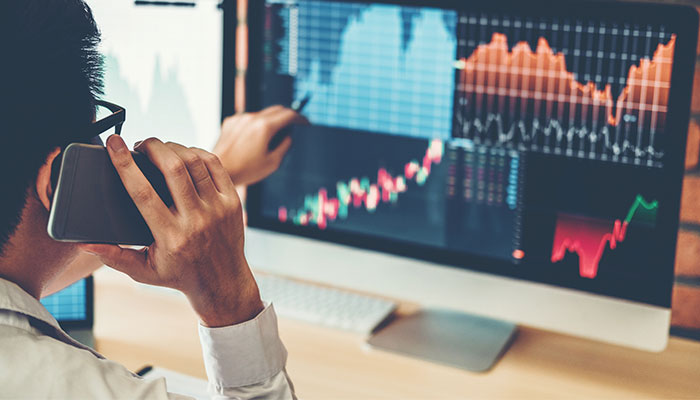Trillions of dollars were wiped off the value of stock markets when the economic reality of COVID-19 hit, decimating investment portfolios and superannuation funds.
The initial crash and the wild fluctuations that followed were likely exacerbated by algorithmic trading platforms, or high-frequency trading (HFT).
So, what is HFT?
HFT is essentially based around increasing the speed at which information travels. High-frequency traders use sophisticated algorithms and cutting-edge technology to identify earning opportunities and execute them faster than anyone else. Much of this involves detecting market movements (trends) and initiating buy or sell orders ahead of other market participants.
How did it start?
That depends on your definition. If we define HFT as an increase in the speed of information, then arguably Julius Reuter’s mid-19th-century use of racing pigeons and then telegraph to gain faster access to financial news were the first HFT innovations.
Financial markets with fully electronic execution – the way we know them today – were developed in the late 1980s, giving rise to algorithmic trading. By 2012, HFT trades had an execution time in nanoseconds and companies were investing millions to shave fractions of a second off transaction times.
What is the motivation?
Even after the recent crash, the total market capitalisation of the US stock market is around $US30 trillion. There are massive incentives to get a piece of the cake. Individuals and companies are always looking for strategies to gain an advantage and beat the market. Being faster is one such advantage.
Can markets crash because of HFT?
There was a famous ‘flash crash’ in May, 2010 when the Dow Jones index lost about 9 per cent of its value, only to bounce back within minutes. This flash crash was initiated by an enormous computer-driven sale.
An investigation by the Commodities Futures Trading Commission concluded that while HFT did not cause the crash, it did contribute to it. Regulators responded by banning certain algorithmic strategies aimed at manipulating the market and improved the monitoring of automated trade systems.
How can markets be manipulated?
Markets respond to information. If you can manipulate information, you can manipulate the market. Fake news is a prime example.
Another example is manipulating the beliefs of other investors. One could place a large order for a share at a particular price without the intention of executing it. Smaller investors are lured in and place orders at the same price.
The large order is then cancelled shortly before it is due to be executed. The market price moves but the small investors are too slow, and their orders end up being filled.
Large traders also sometimes use a technique called ‘wash trading’, in which they almost simultaneously buy and sell the same security in order to attract investors by an increased volume of trading.
What was behind the recent COVID-19 crash?
COVID-19 has had a huge impact on the economy, and therefore also on listed companies. Generally, profits are going to be lower than projected. Investors’ beliefs about how companies will perform have been reflected in the sudden drop in stock prices and the subsequent correction.
Some companies, such as those developing teleconferencing technologies or producing medical supplies, saw their stocks rise almost overnight.
Are there any benefits from HFT?
HFT dramatically changes the market microstructure by increasing market depth and improving liquidity. However, that liquidity is often available only very briefly.

Is there a solution to HFT?
The jury is still out on whether the benefits of HFT outweigh the costs.
Our Experimental Economics Laboratory is currently testing the impact of different microstructures on market outcomes. We are using incentivised experiments in which participants trade shares and earn real cash.
Our recent paper (with Cary Deck and Steven Tucker) describes the use of a trading institution that eliminates market bubbles. As trades occur in batches, HFT speed advantages would be lost.
Superannuation investment options*
In a bear market when stock prices are falling, individuals may be tempted to switch their superannuation investment option to a more conservative position, or even cash.
While you don’t want to hold on to losing stocks for too long, you should keep in mind it is almost impossible to pick the bottom of the market. If you switch your super to cash, you could miss out on significant growth when the market rebounds.
*This is general advice only, please seek professional advice before making changes to your superannuation.
Professor Maroš Servátka is Director of Macquarie Business School Experimental Economics Laboratory



